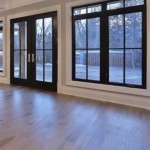Payment for Interior Designers: A Comprehensive Guide
Interior design is a creative profession that involves transforming spaces to be functional, aesthetically pleasing, and aligned with the client's vision. It requires expertise in space planning, color theory, furniture selection, and material sourcing. While the creative aspect is often highlighted, a crucial aspect of the process is the financial agreement between the client and the designer. This article will delve into the various methods of payment for interior designers, providing a clear understanding of typical practices and considerations.
Hourly Rates
One common method of payment for interior designers is an hourly rate. This approach is particularly suitable for smaller projects or those with a more defined scope. The designer charges a fixed hourly rate for their time spent on the project, which could include site visits, design development, sourcing, and communication with contractors. The benefit of hourly rates is transparency, as the client can clearly see how their money is being used. However, it's important to note that this method can be less predictable for larger, more complex projects, as the total cost may fluctuate depending on the time invested.
Flat Fees
A flat fee is a fixed amount agreed upon upfront for the entire design project. This approach is generally preferred for projects with a well-defined scope and a predictable timeframe. It provides both the client and the designer with a clear understanding of the financial commitment involved. The flat fee typically includes a detailed scope of services, outlining the deliverables, such as design plans, material selections, and vendor recommendations. The client knows upfront the exact total cost, while the designer has a defined budget to work with.
Percentage-Based Fees
Another method used for larger projects is a percentage-based fee. This approach involves charging a percentage of the project's overall budget for the design services. This percentage typically falls between 10% and 20% and is applied to the total cost of materials, furnishings, and construction. The advantage of a percentage-based fee is that it aligns the designer's interest with the client's goals, as the designer is incentivized to keep the project within budget. However, this method can be more complex to calculate and may require more detailed budget information.
Retainer Fee
A retainer fee is an upfront payment that secures the designer's services for a specific time period. This fee is non-refundable and serves as a commitment from the client to engage the designer. The retainer fee allows the designer to allocate time and resources to the project, ensuring a dedicated commitment. It is often used for projects with a longer timeline or those requiring substantial upfront work, such as space planning and conceptual design.
Project Management Fee
For projects with a high level of complexity or extensive coordination, a project management fee may be added on top of other payment structures. This fee covers the designer's time and expertise in overseeing the project's implementation, ensuring that the design intent is realized and that the project stays on schedule and within budget. Project management fees are usually calculated as a percentage of the project's construction budget or a flat fee determined based on the project's scope and complexity.
Additional Considerations
Beyond the fundamental payment methods, there are several other factors to consider when agreeing on compensation with an interior designer:
- Scope of Services: Clearly define the specific services included within the agreed-upon fee. This should encompass all design aspects, such as space planning, material selection, furniture sourcing, and project management.
- Travel Expenses: If the project requires site visits or meetings outside the designer's regular service area, discuss the cost of travel and accommodation in advance.
- Contingency Fees: Consider including a contingency fund to cover unforeseen expenses or changes in scope during the project.
- Payment Schedule: Agree on a payment schedule that outlines the milestones and deadlines for each payment.
- Payment Terms: Clarify the payment terms, such as accepted payment methods, deadlines, and late payment penalties.
- Contract: Formalize the agreement in a written contract that includes all the details discussed, ensuring a clear understanding and protection for both parties.
Choosing the best payment method for an interior design project depends on various factors, including project scope, budget, and client preferences. Open communication and transparency are essential throughout the process, ensuring that both the designer and the client are comfortable with the agreed-upon financial arrangement.

The Complete Guide To Structuring Interior Designer And Architect Fees Part 1 Types Of Services Corresponding

When Do You Collect Payment For Interior Design Project

2025 Payment Schedules When Do Interior Designers Get Paid Archova Visuals

Interior Designer Receipt Book

Interior Design Payment Terms Google Search

How To Interior Designs Step By Free Method Pabbly

Finance Your Home Interior With Easy Emi Options Designcafe

Superior Interior Design In Templates For Creative Professionals Template Sumo

2025 Understanding How Interior Designers Get Paid Archova Visuals

Interior Design Quotation Free Catalystk
Related Posts








